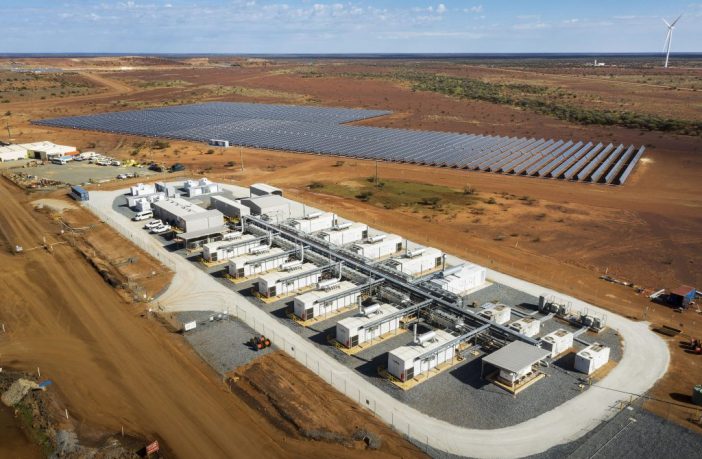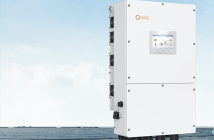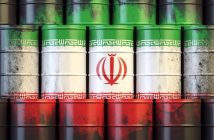- Not only the biggest but also the first one to integrate wind generation on-site, the Agnew Gold Mine microgrid project is leading the way in decarbonizing Australian mining.
- In favorable weather conditions, the 56 MW project delivered by distributed energy producer EDL is able to cover up to 70% of the mine’s power requirements with renewable energy.
After the first stage of the landmark project comprising a 23 MW power station that integrates solar with gas and diesel generation powered up in November, EDL announced on Monday that all five wind turbines have been successfully integrated and are now up and running in Western Australia’s northern Goldfields region.
“We applaud Gold Fields for their vision in embarking on this journey with us, and their role in leading the Australian mining industry’s transition to clean, reliable renewable energy,” EDL Chief Executive Officer James Harman said. He went to acknowledge “the incredible achievement” of the EDL project delivery team and its contractors, noting that delivering the project was no plain sailing.
“We faced transport challenges during the bushfires and impacts on personnel from Covid-19 restrictions as well as geographical, logistics and technical challenges to safely construct this innovative energy facility in the remote WA Goldfields region,” Harman said.
The project comprises four key components controlled by an advanced microgrid system. It features an 18 MW wind farm, a 10,710-panel solar plant generating 4 MW, a 13 MW/4 MWh battery system, and an off-grid 21 MW gas/diesel engine power plant. The development was back by the Australian Renewable Energy Agency (ARENA) to the tune of $13.5 million.
To maximize renewable energy use while maintaining system security, the Gold Fields microgrid will adopt innovative operational practices, such as dynamic load shedding, renewable resource forecasting, and IPP-controlled load management. EDL was contracted to design, construct, own and operate the microgrid to power the Agnew Gold Mine under a 10-year agreement with Gold Fields. To deliver the project, it partnered with German-headquartered juwi.
“We are proud to be able to showcase this project with EDL as an outstanding example of the capacity of the hybrid renewable energy model to meet the dynamic power requirements of remote mining operations,” Gold Fields Executive Vice President Australasia, Stuart Mathews, said.
With the business case for the deployment of renewables at mines now clear on the back of their falling costs, easy maintenance, and new business models, miners are relying increasingly on solar and wind to power their operations. And for Gold Fields, the massive microgrid is only the beginning.
“For our people and our stakeholders, this is a very clear demonstration of our commitment to reducing our carbon footprint whilst strengthening our security of supply. Having built our internal technical capability and developed strong relationships with our business partners, we are well placed to continue to implement renewables solutions elsewhere in our business,” Mathews said.
Renewables-powered mining on the rise
Elsewhere in Western Australia, copper miner, Oz Minerals is looking to build a 55 MW hybrid diesel-solar-wind solution as a baseline of up to 70% of the West Musgrave Project’s operational needs. Another microgrid hybrid project, consisting of a 2.5 MW wind farm, a 1 MW solar farm and a 2 MW/0.5 MWh battery, will provide up to 70% of the electricity needs of a nearby garnet mining and processing plant run by GMA Garnet.
In one of the biggest renewable energy projects in the resource sector, WA’s Pilbara region is set to be home to the first major iron ore mining operation in Australia to be run entirely off renewable energy during the day. The Chichester mining hub run by resources giant Fortescue Metals and built by Downer Group will be powered by a massive 60 MW solar farm coupled with a 35 MW/11 MWh battery facility.
And the list goes on. Mining behemoth Rio Tinto has recently approved the construction of a $98 million solar + battery energy storage system at its Koodaideri mine in the Pilbara. The project will feature a 34 MW solar PV plant alongside a 12 MWh lithium-ion battery. Other notable developments in Western Australia include a 7.3 MW solar array and 2 MW/1 MWh battery at the Granny Smith gold mine in the Eastern Goldfields region and a 6.7 MW solar PV array at the Nova nickel-copper mine located in the Fraser Range.
Presently, Australia’s largest operating solar PV installation at the mining site is the DeGrussa project – a hybrid system located at Sandfire’s copper and gold mine site in Western Australia, which comprises a 10.6 MW solar facility coupled with a 6 MWh battery facility – integrated with an existing diesel generator. The project reached full operation in May 2016.
Author: Marija Maisch
This article was originally published in pv magazine and is republished with permission.











